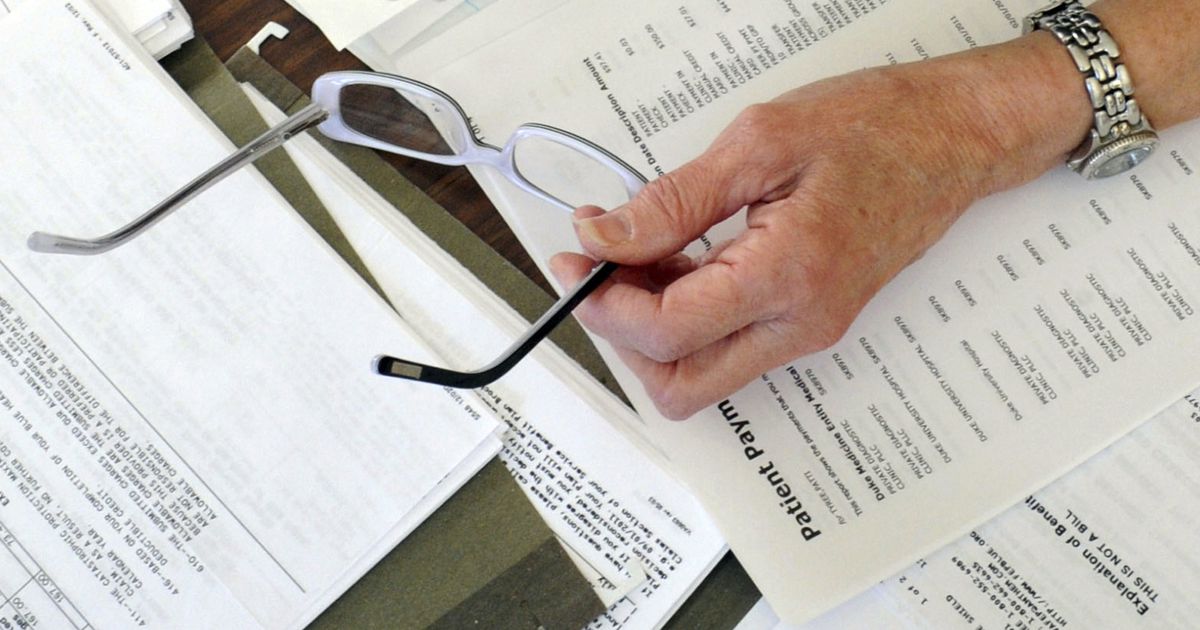About 100 million Americans have medical debt. But the financial pain inflicted by America’s health care system is especially significant for families like mine with serious medical conditions. My daughter, Meg, has a rare genetic disease and my son, Simon, had cancer.
Even with health insurance, the costs are devastating. Like a growing number of Americans, our family benefits from a high-deductible health plan. We owe the first $10,000 of annual health care costs out of pocket before the insurance covers the additional costs. The share of high-deductible plans has nearly doubled over the past decade as insurers seek to shift more costs to patients.
Then there are our monthly health insurance premiums, which cost almost $1,000 per month. And that’s just our share of the bounty. My husband’s employer also contributes his share from a pool of funds that could otherwise be used to increase salaries. The Kaiser Family Foundation estimates that the average annual employer-sponsored family healthcare premium is $22,463, or nearly one-third of the nation’s median household income.
One uncontroversial policy reform that can help families like ours — and all Americans struggling with high health care costs — is price transparency.
Unlike any other sector of the economy that I know of, healthcare only informs consumers of prices after the services have been rendered. This gives hospitals and health insurers the power to charge basically whatever they want. No wonder the prices are so high.
With hidden prices, patients cannot buy cheaper care or avoid overcharging. Most American consumers know to avoid having their car serviced at auto manufacturers, as the prices are much higher than at local auto stores. But we don’t have price protection to avoid certain large hospitals or health insurers. The power imbalance between health care interests and consumers has more than doubled national inflation-adjusted health care spending this century.
If our family could have the pricing information to choose less expensive treatments for our children, we could extend the pre-deduction period of our health plan and smooth out our budget. Under the current model, where we have no price protection, our payouts are stacked up at the beginning of the year, leaving us with no choice but to put the bills on our credit card and get into more debt. .
For example, we were billed $218,590 for a three week hospital stay for my son. If we had known about this astronomical price before the care, we would have asked to be discharged sooner and performed all the necessary additional tests and treatments in a much less expensive outpatient setting. Yet, under the opaque status quo, getting pricing information in advance is nearly impossible. (Analyzing our bills after treatments to try to determine the cheapest providers is also difficult because the statements are rarely detailed by treatment.)
Even after reaching our annual deductible, we still feel socially responsible to avoid rising healthcare prices, as insurers pass on post-deductible costs in the form of higher premiums to everyone.
We estimate that we have spent $4 million on health care for our children. If we could identify less expensive treatments, we would. Real prices are needed to exert market pressures on the health care system that can control costs – just as they do for car maintenance or any other economic transaction in today’s economy.
Two federal rules already require hospitals and health insurers to post their actual and up-front prices. Yet compliance has been uneven. A recent report by PatientRightsAdvocate.org reveals that only 25% of hospitals fully comply with the rule. Health insurers have also made their tariffs very difficult to access.
Rigorous enforcement of these price transparency rules can enable tech innovators to collect prices in easy-to-use online shopping apps like AirBNB. Ordinary Americans want such bipartisan solutions from their policymakers rather than partisan bickering.
Real health care prices can give ordinary Americans the information they need to dramatically reduce medical costs and avoid debt through choice and competition. This fundamental economic right can especially help high health care using families like mine who need it the most.
Trisha Fullmer, Tooele, supports the Millies Princess Foundation which raises funds to fight childhood cancer.
